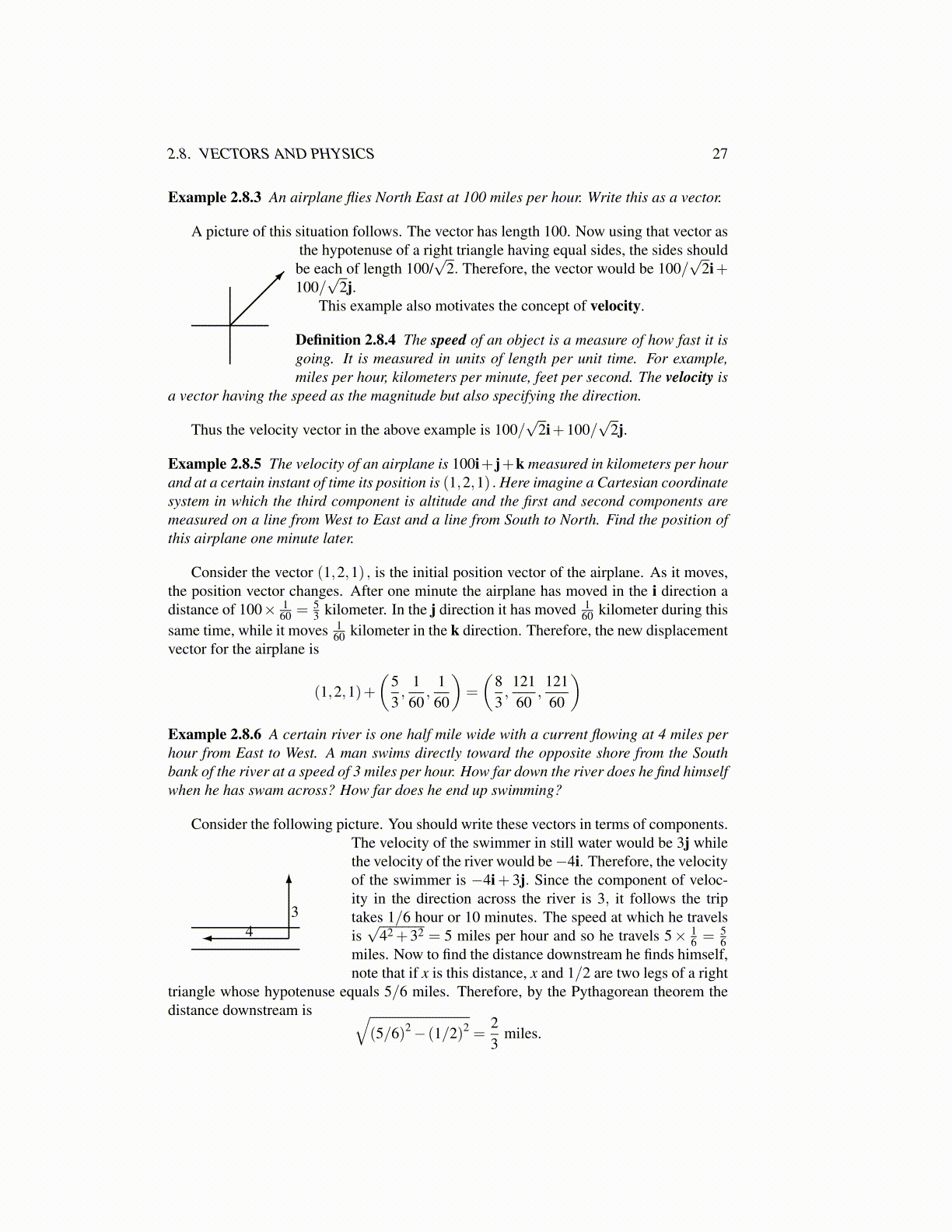
2.8. VECTORS AND PHYSICS 27
Example 2.8.3 An airplane flies North East at 100 miles per hour. Write this as a vector.
A picture of this situation follows. The vector has length 100. Now using that vector asthe hypotenuse of a right triangle having equal sides, the sides shouldbe each of length 100/
√2. Therefore, the vector would be 100/
√2i+
100/√
2j.This example also motivates the concept of velocity.
Definition 2.8.4 The speed of an object is a measure of how fast it isgoing. It is measured in units of length per unit time. For example,miles per hour, kilometers per minute, feet per second. The velocity is
a vector having the speed as the magnitude but also specifying the direction.
Thus the velocity vector in the above example is 100/√
2i+100/√
2j.
Example 2.8.5 The velocity of an airplane is 100i+ j+k measured in kilometers per hourand at a certain instant of time its position is (1,2,1) . Here imagine a Cartesian coordinatesystem in which the third component is altitude and the first and second components aremeasured on a line from West to East and a line from South to North. Find the position ofthis airplane one minute later.
Consider the vector (1,2,1) , is the initial position vector of the airplane. As it moves,the position vector changes. After one minute the airplane has moved in the i direction adistance of 100× 1
60 = 53 kilometer. In the j direction it has moved 1
60 kilometer during thissame time, while it moves 1
60 kilometer in the k direction. Therefore, the new displacementvector for the airplane is
(1,2,1)+(
53,
160
,160
)=
(83,
12160
,12160
)Example 2.8.6 A certain river is one half mile wide with a current flowing at 4 miles perhour from East to West. A man swims directly toward the opposite shore from the Southbank of the river at a speed of 3 miles per hour. How far down the river does he find himselfwhen he has swam across? How far does he end up swimming?
Consider the following picture. You should write these vectors in terms of components.
43
The velocity of the swimmer in still water would be 3j whilethe velocity of the river would be−4i. Therefore, the velocityof the swimmer is −4i+ 3j. Since the component of veloc-ity in the direction across the river is 3, it follows the triptakes 1/6 hour or 10 minutes. The speed at which he travelsis√
42 +32 = 5 miles per hour and so he travels 5× 16 = 5
6miles. Now to find the distance downstream he finds himself,note that if x is this distance, x and 1/2 are two legs of a right
triangle whose hypotenuse equals 5/6 miles. Therefore, by the Pythagorean theorem thedistance downstream is √
(5/6)2− (1/2)2 =23
miles.